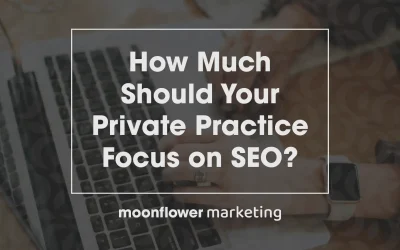During the 2022 midterm election cycle, I was probably more involved in local politics than I’ve ever been. Mostly through my work with the North Shadeland Alliance.
Watching countywide candidates jockey for votes taught me a lot about brand positioning and the need to overcome objections.
Candidates with clear paths to victory found themselves beaten down by similar objections people had to voting for them. Instead of addressing them head-on, they avoided them, and they lost.
Whether you are a politician or a business, there are always at least two types of objections to voting for you or working with you.
The first type of objection is a direct objection. There is something people assume about you, real or not, that keeps them from supporting you.
The second type of objection is a categorical objection. There are real or perceived reasons not to support you based on your affiliations (your industry, your party, etc.)
Both types of objections, if not intentionally addressed, can tank your business (yes, we’re going to focus on business from here on out and leave the politics behind. Phew!)
Let’s look at each type of objection to your business and how you might overcome those objections.

Direct Objections to Working With You
Direct objections to working with you are things directly related to you that might prevent someone from hiring you or doing business with you.
Here is a list of a few common objections to working with a business that likely impact you no matter what you do:
- Price (too high or too low)
- Timeline (this is going to take too long)
- Process (this feels too complicated)
- Confusion (I don’t know how to start)
Every business deals with these common objections from clients at some point. Great businesses clearly overcome these objections through their website and marketing material.
Let’s look at how to overcome each objection to working with your business.
Overcoming the Price Objection
Oddly enough, the price objection can be that your prices are either too high (most common) or too low. You might think, “Why would anyone complain about low prices?” Let’s start with the high price objection and work our way back.
The most common price objection is that your prices are too high. The best way to overcome this is to be VERY clear about the value you provide for your prices, and what success looks like for your clients after they work with you.
This doesn’t mean just outlining a list of your services but noting the key benefits your services get someone when working with you.
- How will their life be made better by working with you?
- What is made easier?
- What pain do you help them avoid?
- What do they get back?
- How is their life personally and professionally improved after you complete your work?
Get creative!
A less common objection is that your prices are TOO LOW. This seems odd at first, but when people think your prices are too low for the amazing services you offer, they assume there is a catch or something wrong with you.
The best way to fix this is to correctly price your offerings. Our advice would be to price in a way that threads the needle of providing a lot of value for the price but also expensive enough that people have to think about it for a second.
If you’re too cheap and someone hires you, they’re not going to respect your expertise as much as if they had to nudge themselves to spend the money to hire you.
Overcoming The Timeline Objection
Another objection to working with you is that it is going to take too long to get to a finished product. People are impatient and want results ASAP.
To overcome the timeline objection, be able to lay out a clear (even if closely estimated) timeline for your work together. Let them know what will speed up the timeline and what might slow it down.
What can they do to speed up the process for you?
If what you do is a naturally drawn out process (personal injury cases, for example, can take years on occasion), give some data for the average comparable case or project and be able to explain why it’s necessary it takes as long as it does.
The more clearly you can lay out the road ahead, the less likely someone is to object to working with you.
Overcoming the Process Objection
A VERY common objection to working with most businesses is the process objection. People just assume it is too difficult to work with you.
This is easily overcome by laying out a 3-4 step process plan on your website. This is something we help you do in our Brand Messaging Sessions.
Layout three to four simple steps to working with you. This might look something like this…
- Schedule a Free Consultation
- Develop a Plan of Action
- Achieve Success
For each business, the wording of those steps will be different, but that is essentially the process plan for the majority of service-based businesses.
Start with how to initiate the relationship, fill in the bulk of the work, then lean into what success looks like. Boom. Process plan that feels achievable. Objection overcome.
Overcoming the Confusion Objection
Confusion can come in a lot of different ways. The most common ways tend to be confusion around how what you offer solves your customer’s problem. The other common type of confusion is not knowing what to do next.
You would be amazed at how many business websites offer great value and draw the customer in and then forget to call them to action.
What do I do now? Do I call you? Do I fill out a form? Do I need to show up at your office? Smoke signals? TELL ME!
If your website doesn’t have a clear and repeated call to action button (Buy Now, Schedule a Call, Free Consultation, Talk to an Expert, etc.), you are bleeding new business.
Ok, let’s move on to our second type of objection to working with your business and how you can overcome it.

Categorical Objections to Working With Your Business
After overcoming the direct objections to working with your business, you might have a few categorical objections to working with you.
Categorical objections to working with your business are stereotypes placed on you because of the industry you operate in. Every industry has a few negative stereotypes to overcome.
Good news! These are very easy to overcome.
The easiest way to overcome these categorical objections or stereotypes is to address them through an Agreement Plan on your website.
Sometimes, they’re a list of promises you make your prospective clients
- We will always return your call within 24 hours
- We will give you weekly updates on your progress
- Get a dedicated representative for your project
Sometimes, they’re money back or return promises
- Return it within 90 days if you’re not satisfied
- On time or it’s free!
The easiest way to come up with what should be in your agreement plan is to look at the negative reviews of your competitors or others in your industry and then promise the opposite.
Disclaimer: You need to be able to deliver on your promises every time, or those negative reviews will be twice as ruthless for you.
Don’t Lose Business to Something You Can Easily Fix
Overcoming objections isn’t hard. All it takes is some professional awareness and a little work. By clearly overcoming objections to working with you on your website and in your marketing material, you will increase the number of leads coming through your door.
Want help? Our Brand Messaging Sessions address objections potential clients might have to working with you and give you the language you need to overcome them.





0 Comments